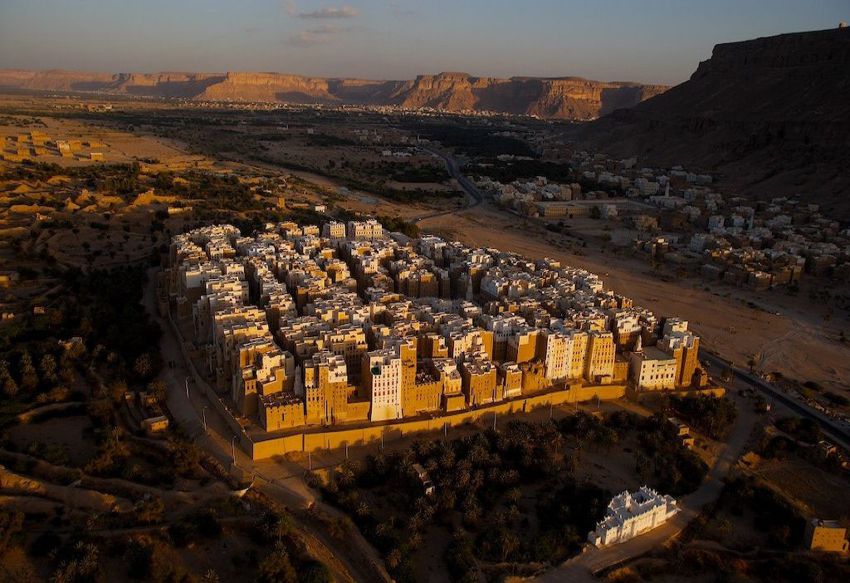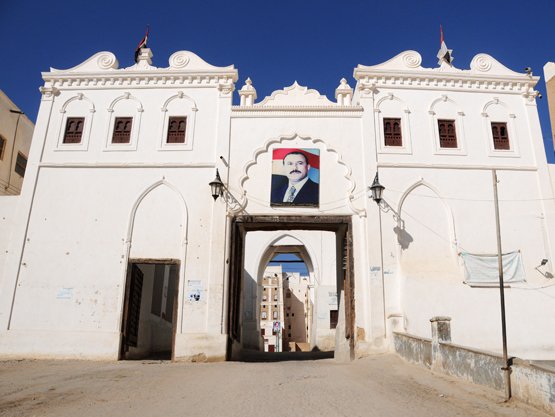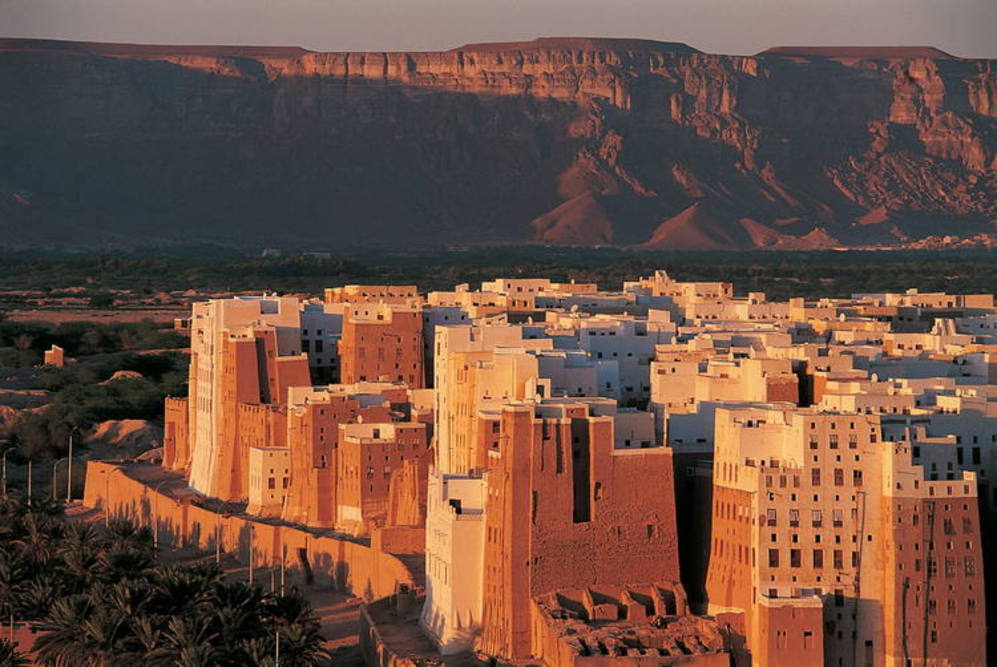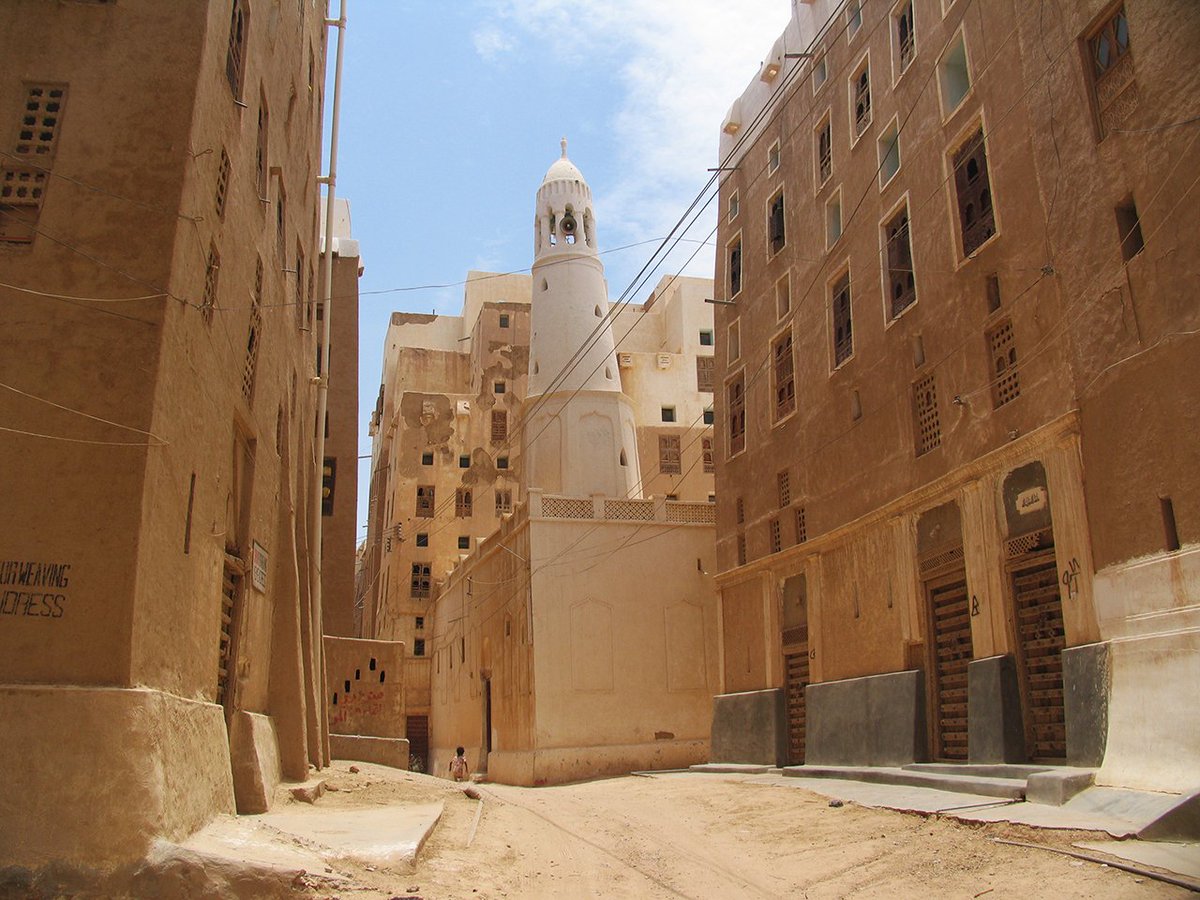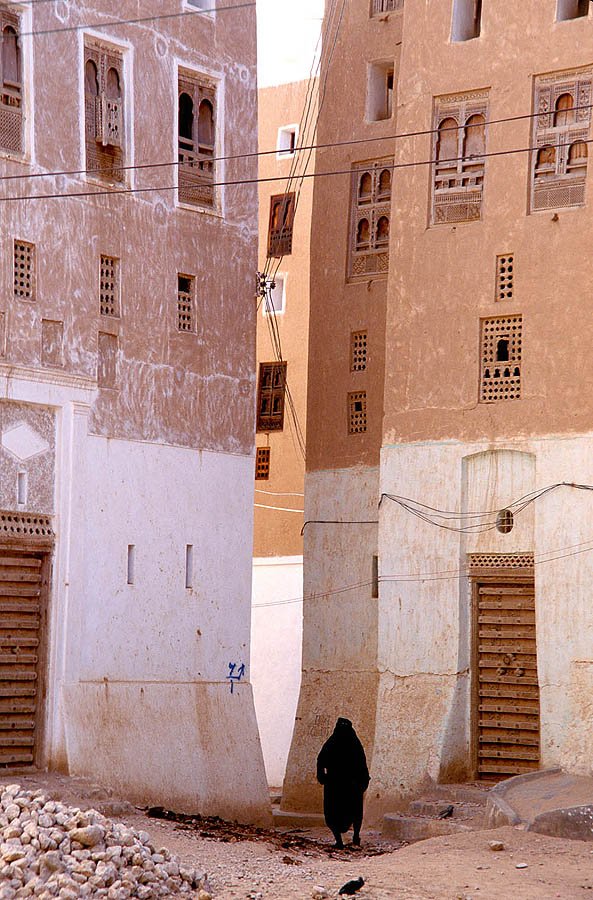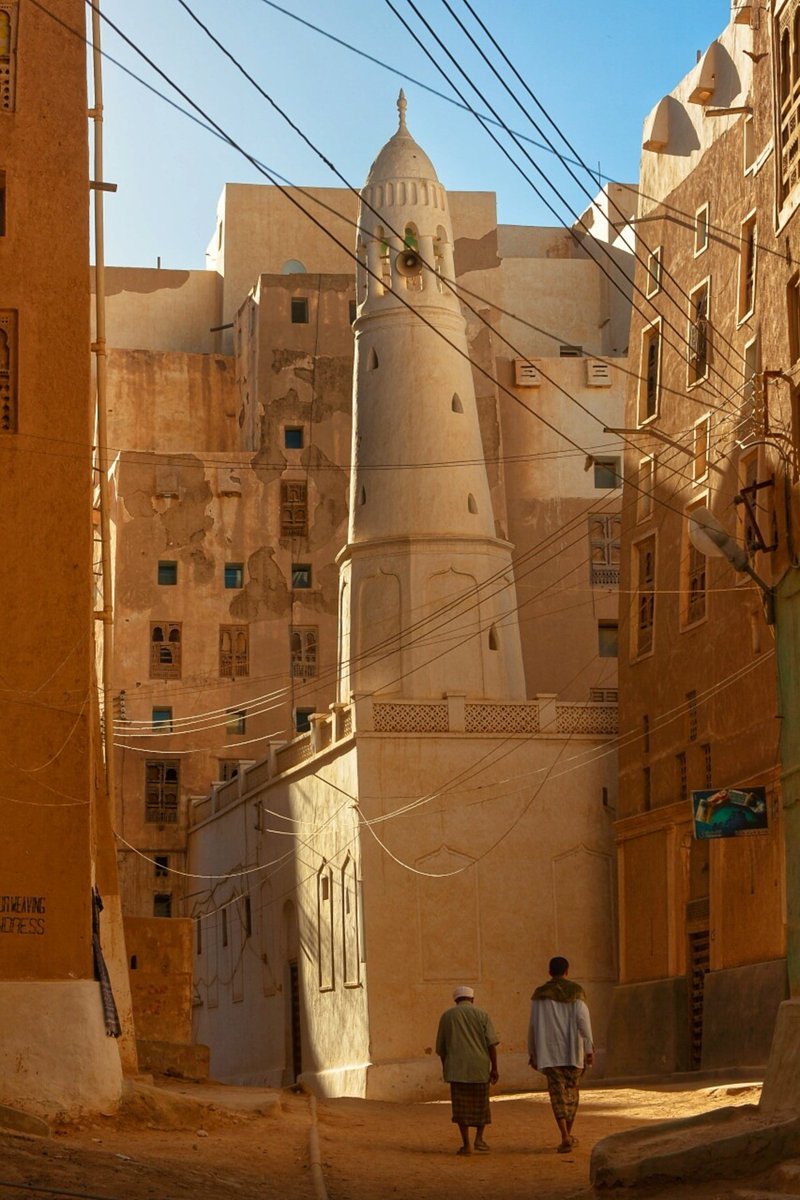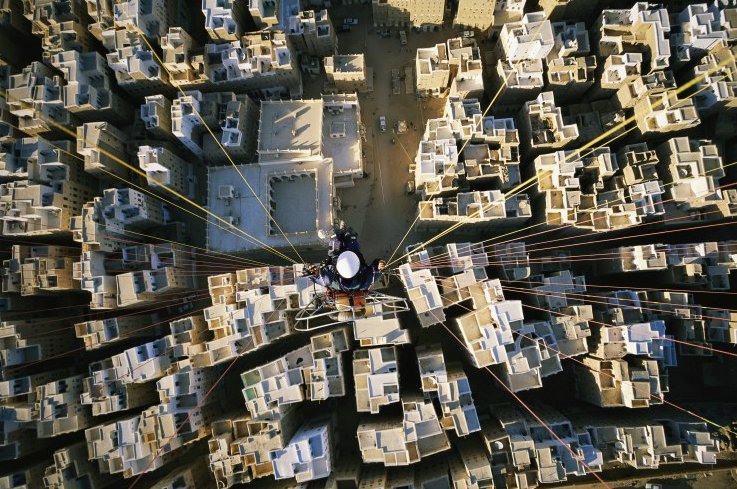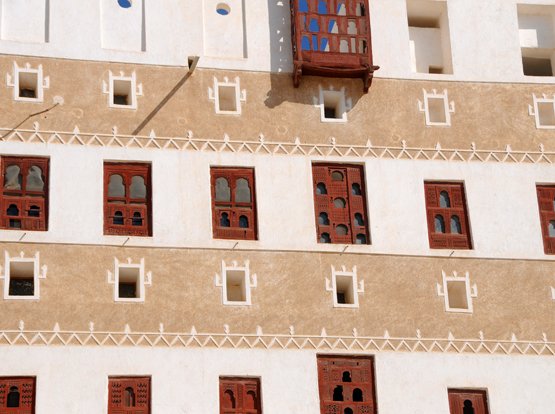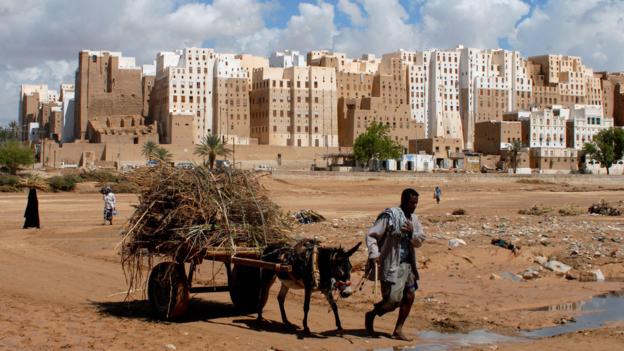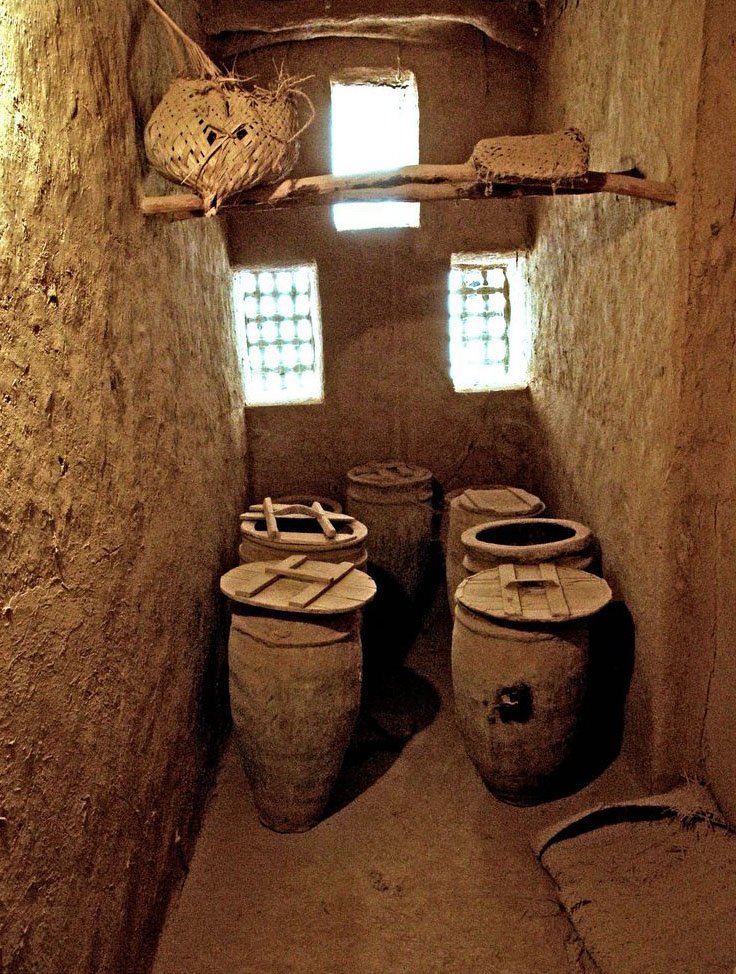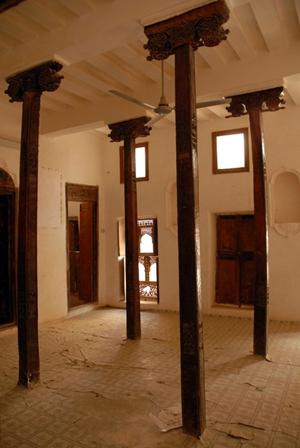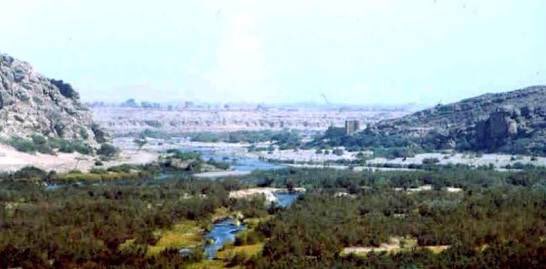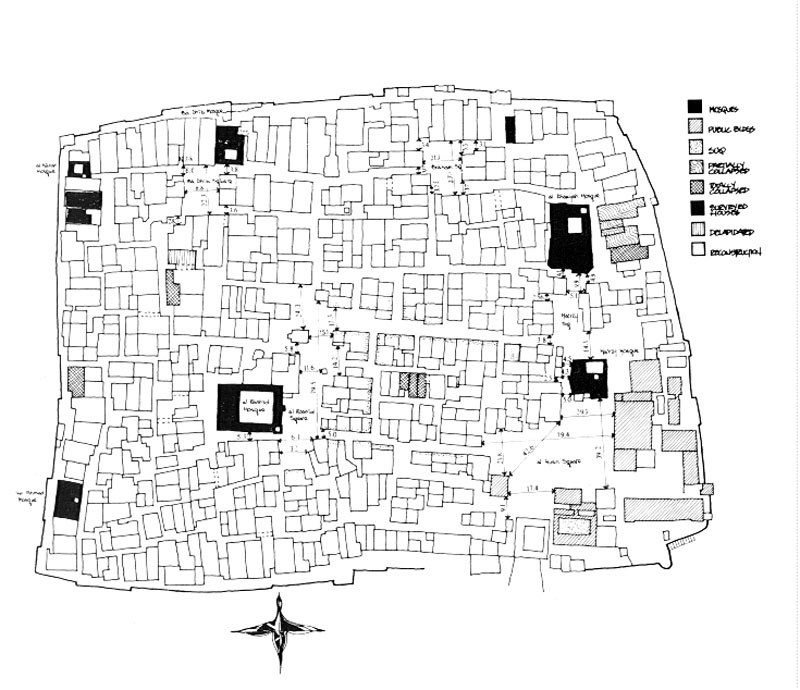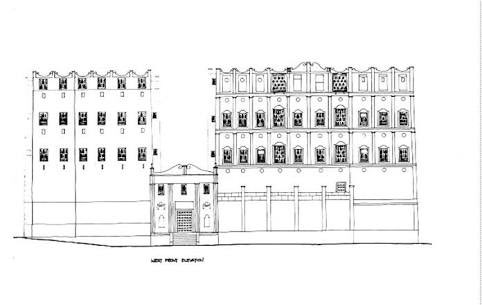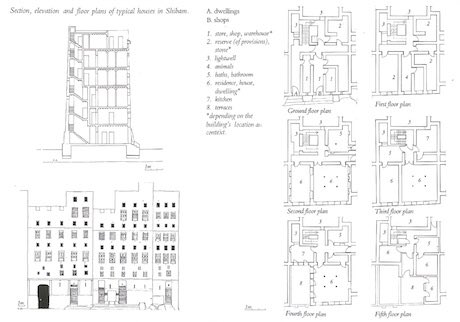The old walled city of Shibam, Yemen, has been inhabited at least since the 3rd c., an example of perfect desert urbanism. A pop. of 7000 living on 0.03 square km (three times as dense as the the most crowded Wards of London), with houses clustered around the five public squares.
The wall around the city is 6-9 meters tall and about 1200m long. There is only one gate, from the time when the city was constantly on the guard against raiders and enemy attacks. Wooden doors protect two pedestrian entrances and one arched entrance for cars, cattle, caravans.
A typical Shibam high rise (the first high rise city in the world, with some buildings dating back to the 16th c.) is up to 30m tall, with 7-8 stories, each story being between 2-6m tall. The ground floor walls are often 1.3-2m thick.
Buildings are typically made with locally manufactured dried brick and mud, but wooden details occur and lower floors are sometimes made in stone. A lime and mud exterior coat can protect the walls for centuries and even rainproof the roof terraces if maintained regularly.
The street layout has only one purpose: to protect the people from the heat and the sun. Tall buildings give shade to the streets which laid out in a zig zag pattern protects the cool night air to from being blown out at the first morning breeze.
The buildings use an extremely clever natural air conditioning: many small windows at different height levels with which one can fine tune air flow so that inside temperature remains 20-21 degrees c. during a 24 hour period even with wild temperature swings outside.
Apart from war, floods, and recently tourism (Shibam is now on the UNESCO list), a major threat to the mud built city are leaky indoor plumbing, badly maintained roofs and of course, western toilets.
Originally the toilets of Shibam separated liquids (flowing out) and solids (carried out), for reuse in agriculture, an almost perfectly sustainable system using nothing but muscle power and rain. It takes quite a degree of coordination to keep a city of 7000 going in the desert!

 Read on Twitter
Read on Twitter